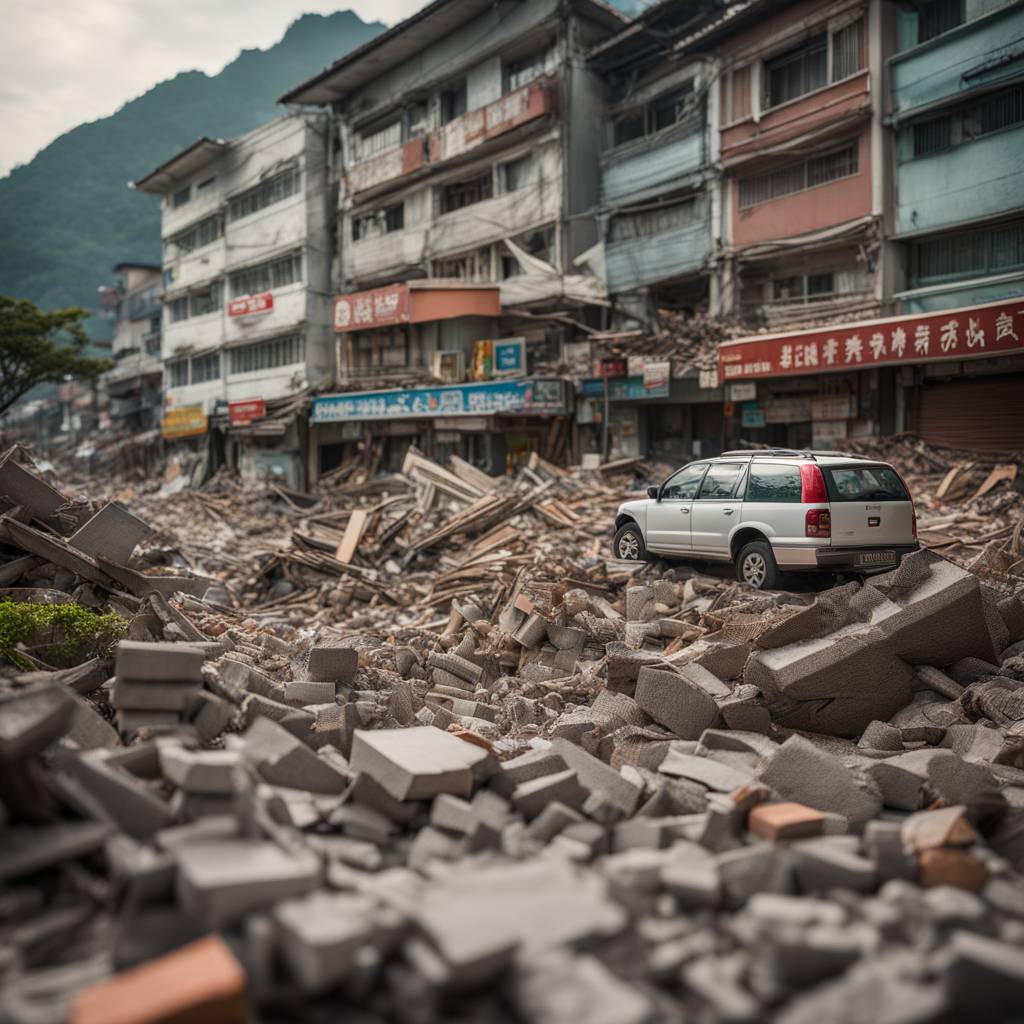Taiwan experienced its strongest earthquake in 25 years, causing damage to buildings and triggering a tsunami that reached southern Japanese islands. Despite the significant impact, there were no immediate reports of deaths or injuries. The earthquake, with a magnitude ranging from 7.2 to 7.4, struck near the city of Hualien in eastern Taiwan. The tremors were felt in other countries such as China and the Philippines, prompting evacuations and precautionary measures to ensure the safety of residents.
The earthquake caused a five-story building in Hualien to collapse its first floor and lean at a 45-degree angle, while other structures in the capital, Taipei, suffered damage such as fallen tiles and debris. Train and subway services were suspended in Taiwan, and traffic along the east coast was heavily disrupted due to landslides and falling debris. Despite occurring during the morning rush hour, people on the island were relatively calm, as Taiwan is accustomed to earthquakes and conducts drills to prepare for such disasters.
While the tsunami wave detected on Yonaguni island in Japan was relatively small at 30 centimeters, residents were still advised to seek higher ground until the threat passed. Military aircraft were deployed to assess the impact in the Okinawa region. China also felt the tremors, with reports of violent shaking in Fujian province. Similarly, the Philippines issued evacuation warnings along its northern coast, although no major tsunami was reported. In Taiwan, several aftershocks followed the initial earthquake, causing further concern among residents.
Taiwan’s history of seismic activity includes major earthquakes such as the devastating 1999 quake that resulted in thousands of deaths, injuries, and destroyed buildings. The country’s regular drills and preparedness efforts helped mitigate the impact of the recent earthquake, despite the damage and disruption caused. Residents in affected areas were urged to remain vigilant and follow safety protocols until the situation normalized. The Pacific Tsunami Warning Center confirmed that the threat had largely passed for all areas, with waves only reported in Taiwan and southern Japan.
The Pacific “Ring of Fire,” where the earthquake occurred, is known for its high seismic activity due to the presence of numerous fault lines around the Pacific Ocean. This geological phenomenon makes countries like Taiwan and Japan susceptible to earthquakes and tsunamis, requiring constant monitoring and preparedness measures. The collaborative efforts of various countries’ authorities and organizations in responding to natural disasters highlights the importance of regional cooperation in ensuring the safety and well-being of communities. As the affected regions begin recovery and restoration efforts, lessons learned from this earthquake will be crucial in enhancing resilience and disaster response capabilities for the future.


